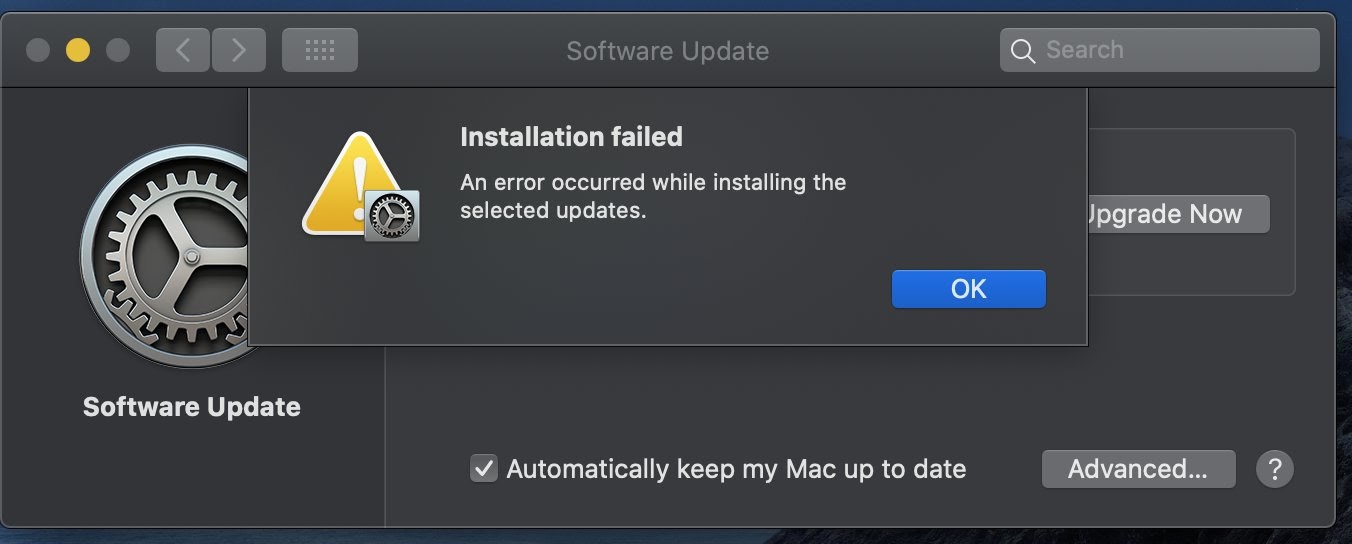- Macos Could Not Be Installed
- Os X Could Not Be Installed No Packages
- How To Fix No Packages Were Eligible For Install
OS X could not be installed on your computer.
No packages were eligible for install. Contact the software manufacturer for assistance.
Quit the installer to restart your computer and try again
Oh dear… When trying to install OS X 10.11 (El Capitan) you may encounter this message. This happens because the the installer certificates are no longer valid when checked against the clock of your mac.
I downloaded the 'app' from the Store on the iMac and restarted to begin the installation process. During the install I receive the following message: OS X could not be installed on your computer. No packages were eligible for install. Contact the software manufacturer for assistance. Quit the installer to restart your computer and try again. I did not partition my new drive, I erased and formatted in MAC OS Extended (Journaled) only. I still could not get the original disk that came with the macbook Air to install. Thanks for the key to eject the disk. The Snow Leopard 10.6 disk installed properly, I've just completed the Time Machine restore and I think everything is good. Easy solution for / OS X could not be installed on your computer.No packages were elegible for install. Contact the software manufacturer for assistance.
Don’t panic though as this is easily fixed using Terminal, so don’t restart immediately.
Macos Could Not Be Installed
- Click Utilities on the menu bar
- Select Terminal
- Type date 062112422016
- Exit Terminal
- Click Restart


Os X Could Not Be Installed No Packages
When you restart the mac and try the installer again it will now believe the certificates are valid and will continue as it should.
How To Fix No Packages Were Eligible For Install
Sep 16, 2021 The Mojave 10.14.1 update does NOT install properly on unsupported machines, and could result in an unbootable OS. If you want to install the 10.14.1 update (and are not currently running 10.14.1), perform the following steps. If the errormacOS could not be installed on your computer persists after removing EmuVariableUefi-64.efi, then a bad SMBIOS setting could be what’s behind it. If the SMBIOS spoof is too old (i.e. 2011 or earlier) the installer will detect that the “Mac” as too old to run High Sierra.